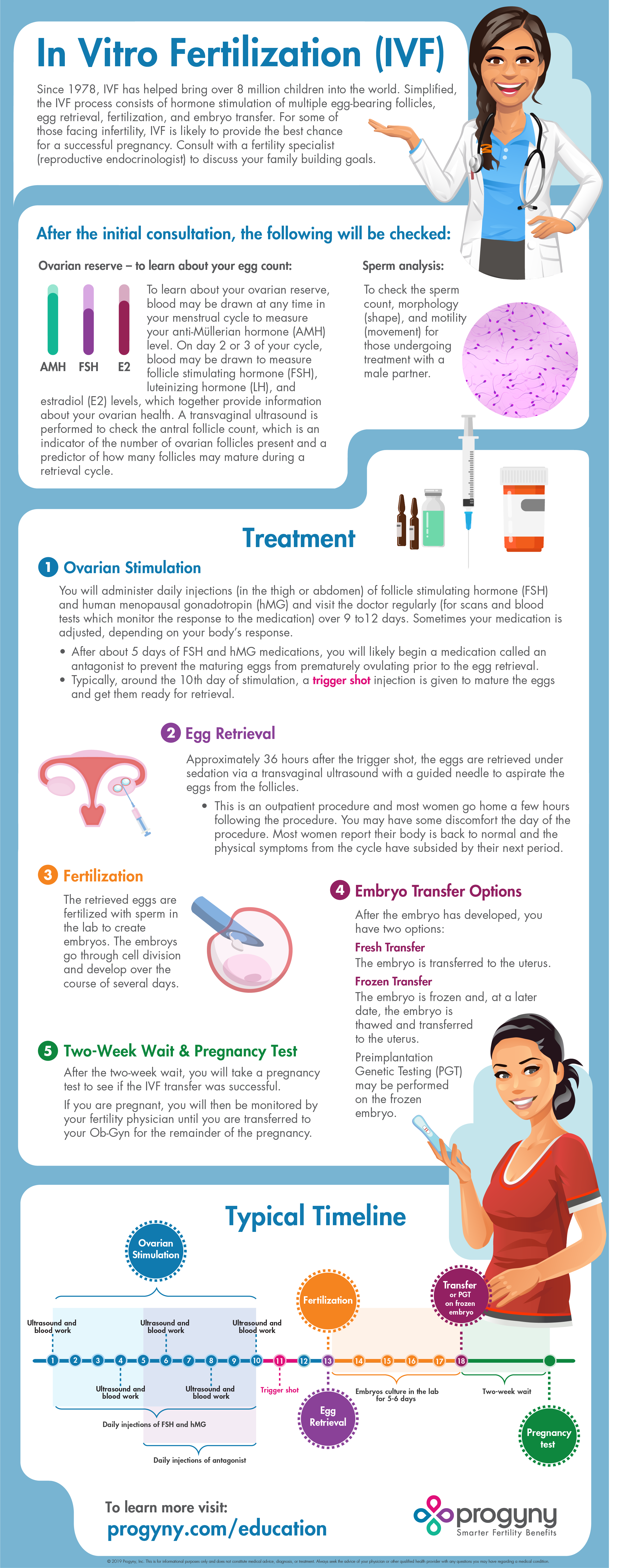In vitro fertilization (IVF) is a five-step process that literally means “in glass.” Here is a brief overview of the steps associated with IVF.
Step 1
Ovarian stimulation with medication
Rather than a single egg normally developing each month, various medications are used to stimulate the ovaries to produce multiple mature eggs.
Step 2:
Egg Retrieval Under Ultrasound Guidance
Eggs may be recovered by ultrasound-directed procedures, under sedation. Ultrasound allows for accurate aspiration of the egg. We guide a needle into each follicle and aspirate its contents, then the eggs are transferred to a sterile container to await fertilization. The process is repeated until all the mature follicles have been aspirated.
We monitor the ovarian response and time the administration of hCG, which causes the release of the egg in a woman.
Step 3:
Semen collection, processing, and insemination
Shortly before or after the egg retrieval, a semen sample will be collected. The semen sample is processed to isolate the strongest, most active sperm. Thousands of these sperm will then be placed with each mature egg. For partners who are concerned about producing a specimen on demand or who may not be available at the time of egg retrieval, a semen specimen is frozen several weeks before the egg retrieval.
Step 4:
Fertilization
A semen sample is obtained from the male partner and processed. Once the eggs are retrieved, many prepared sperm are placed with an egg in a laboratory dish and allowed to incubate at body temperature. After approximately 48 to 72 hours, if the eggs have successfully fertilized and are growing normally, they are then transferred to the uterus. This is called embryo transfer.
If there are issues with sperm quality, single sperm injection may be done using Intracytoplasmic Sperm Injection (ICSI).
Step 5:
Embryo transfer under ultrasound guidance
Embryo transfer is performed without anesthesia with the help of ultrasound. The embryos are placed in a catheter for transfer into the uterus. The use of ultrasound assures a more precise placement of the embryo.



